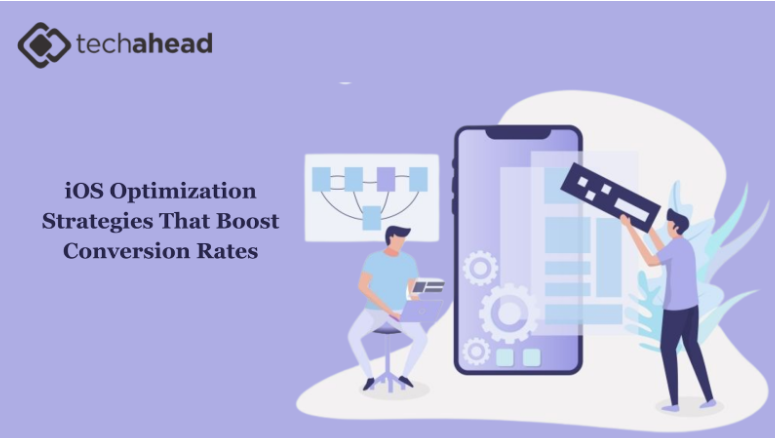Getting users to download your app is only half the battle. The hard part is converting those downloads into actual conversions. Thousands of developers push new iOS apps onto the App Store each week, yet few of them can convert interested users into repeat customers.
Why? Because most forget about the most important factor: conversion optimization. Unless your app’s design, speed, and messaging are also built with conversion in mind, you’re leaving growth on the table.
Most iOS app development companies focus intensively on features and design, but neglect the subtle, data-driven strategies that drive user choices. The best-performing apps balance compelling design with strategic optimization, from onboarding to personalization, to drive interest to action.
Let’s check out the strategies that really work when it comes to iOS app conversions.
Think Like Your Users, Act Like a Marketer
Many times, developers become stuck in a cycle of technical iteration without taking a step back to look at the product through the eyes of a user. The most effective iOS app development firms don’t simply write code, they craft experiences that convert. They start with a clear vision of their target user’s journey and pain points.
Want higher conversions? Begin with your App Store listing. This is your online store, and it needs to sell, not only explain.
App Icon
Make it pop. Utilize contrast, clarity, and brand alignment. Consider it your first impression.
Screenshots
These shouldn’t be just screenshots. Utilize them to create a visual story. Include captions that emphasize benefits, not merely features.
App Preview Video
A 15 to 30 second video will increase installs significantly. Keep it tight, and energetic.
These are outside-level changes, but they can have the biggest impact when done strategically.
Onboarding is the Real Task
Most drops-off occur in the first 30 seconds of launching an app. That’s a drawback, but it’s also a chance. See what works:
- Progressive onboarding: Don’t present five slides at the start. Show features in context as people navigate.
- Permission priming: Don’t prompt for notifications or access location immediately. First tell them why you need to, and why it’s great for them.
- Micro-conversions: Segment the signup process into tiny, satisfying steps.
Performance is Conversion
Speed sells. Users will not tolerate lag, especially on mobile. So, audit your app’s performance regularly. Concentrate on:
- Launch time: Apps that take more than 2 seconds to open risk abandonment.
- Memory usage: Optimize assets and clean up unused resources.
- Network calls: Lazy load where possible and reduce backend latency.
These are engineering decisions, but they directly influence perception and conversion.
Personalization = Higher Retention
A static experience is easy to forget. But when an application feels like it was built only for you by responding to your actions, habits, and preferences, it becomes part of your routine. Personalization doesn’t require complex AI. It starts with simple behavioral cues:
Tailored content suggestions
Show users more of what they engage with. If someone favors one feature or section, prioritize that in the interface.
Context-aware notifications
Timing matters. Instead of a daily reminder at noon, send a message when the user is most likely to act, based on past behavior.
User segmentation
Group users by how they interact with your app like first-time visitors, active users, dormant accounts. Then adjust messaging and features accordingly.
Leverage In-App A/B Testing
Why guess what works when you can test? Using tools like Firebase or Optimizely, run controlled experiments on elements such as:
- CTA button wording and placement
- Number of onboarding steps
- Subscription offer formats
You might be surprised how a small tweak like changing “Start Free Trial” to “Try It Now”, can lift conversions by double digits.
This is where a custom software development company often steps in, offering expertise not just in building, but refining through iteration and data-driven insights. Their role extends beyond launch into ongoing optimization cycles, and that’s where real growth lives.
Reviews, Ratings, and Retention Loops
User feedback plays a direct role in conversion rates. A strong rating improves visibility in the App Store and builds trust with new users before they even open the app.
Here’s how to approach it:
Timing matters
Ask for reviews after a user completes a positive action — like finishing a task, reaching a milestone, or interacting multiple times. This increases the chance of getting a high rating.
Address negative feedback
Offer an in-app way to report problems or give suggestions before they turn into public complaints. A visible support option shows users you care and can prevent unnecessary churn.
Beyond ratings, retention loops keep users engaged over time. These might include:
- Updates that highlight new features
- Personalized messages that re-engage lapsed users
- Dynamic content that evolves based on usage history
Retention directly influences conversion. If users don’t return, they won’t convert. If they do, each return gives you another chance to deliver value and build loyalty.
Key Takeaways
Optimizing your iOS app for conversions is not just about tweaking visuals or adding a few prompts but more about creating a thoughtful, user-centric experience at every stage. From App Store presentation to in-app personalization and performance, each element plays a critical role in influencing user behavior.
High conversions result from steady, strategic gains based on actual user data. Whether you have internal talent or are working with experts, keeping your eye on what drives retention, engagement, and trust will reward you. Prioritize clarity, speed, and relevance, and your app might not only attract users, it might convert them into repeat customers.


